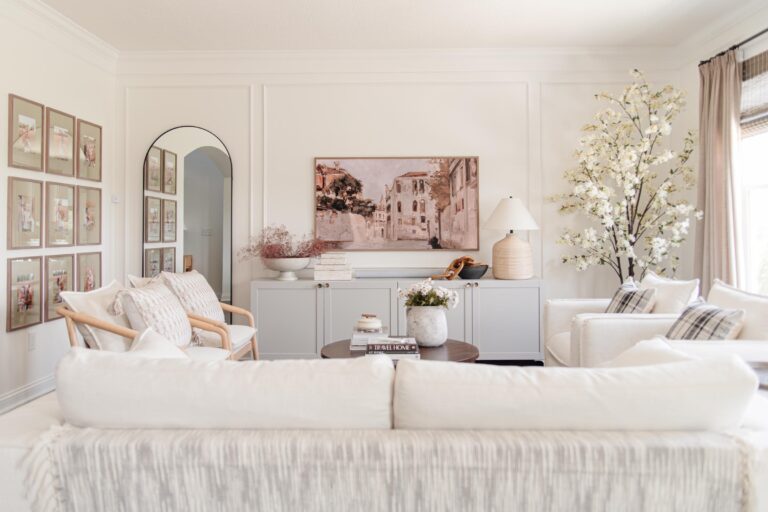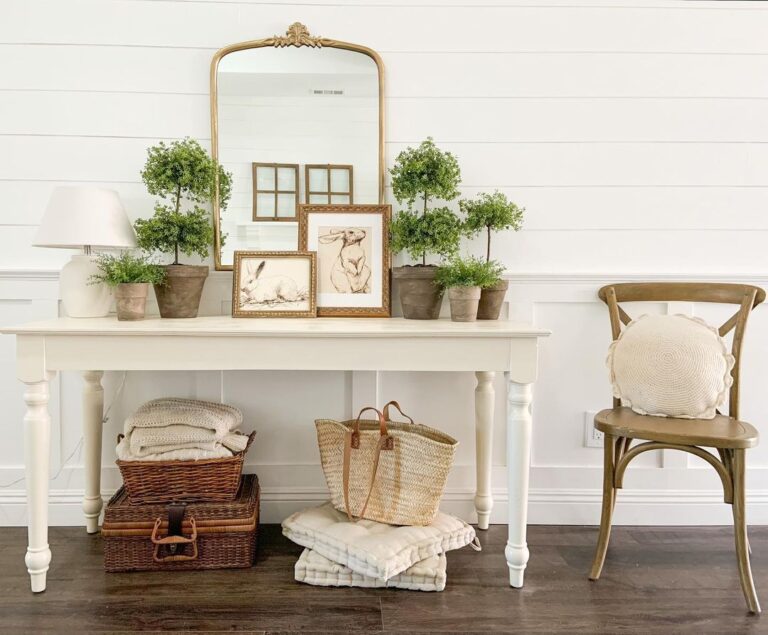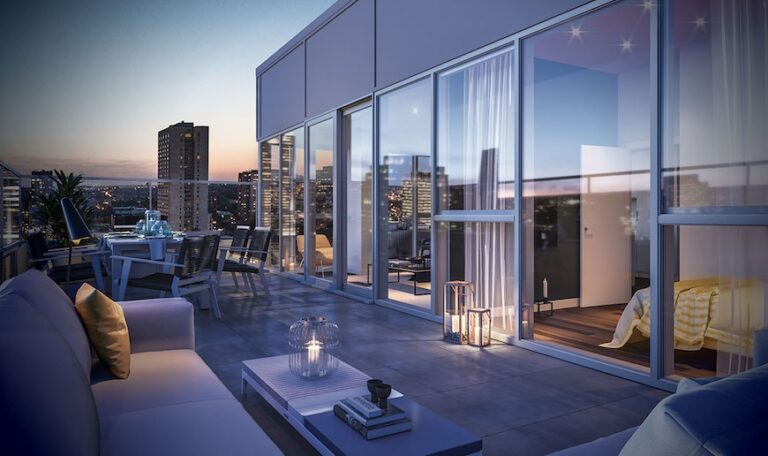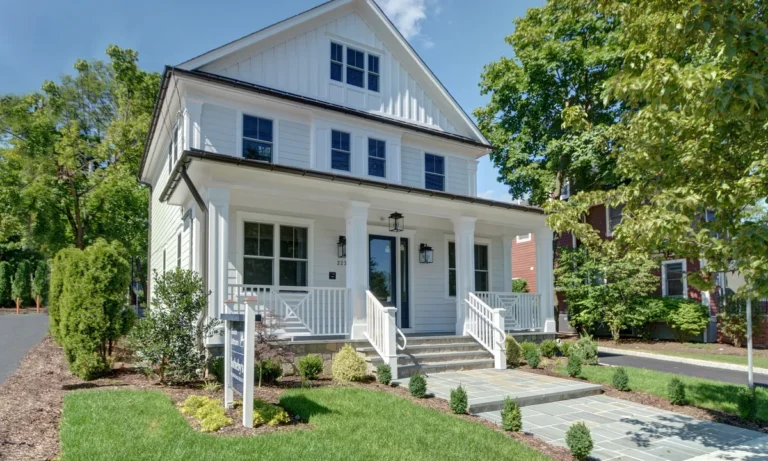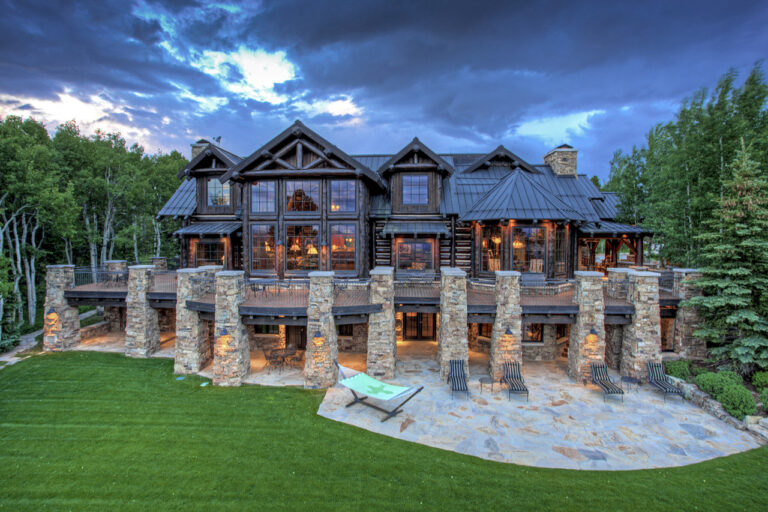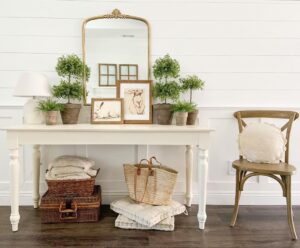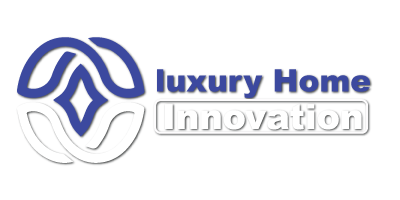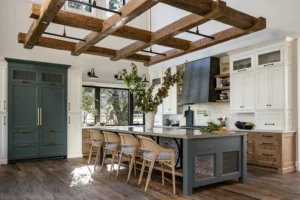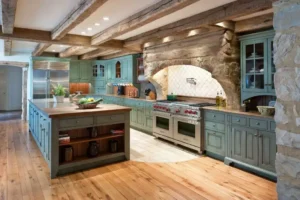It was a stormy night in 1900 when the small town of Galveston, Texas, was hit by one of the deadliest hurricanes in American history. Amid the chaos, there were tales of survivors who took refuge under homes with pitched roofs. Their steep angles shed the rain, directing the wind over them like a ship cutting through turbulent seas. Neighbors gathered under these roofs, huddled in safety as their homes swayed but stood strong against the storm’s wrath. The pitched roof, with its characteristic slope, has long been a symbol of shelter—an architectural design that doesn’t just offer protection from the elements but has historically shaped the way we think about home and security. From medieval castles to contemporary suburban homes, the pitched roof has evolved while retaining its quintessential role in architecture.
But why, in an era of sleek modernist designs and flat rooftops, does the pitched roof continue to dominate residential architecture? To understand this, we need to dive into its functionality, the stats that support its prevalence, and the ways this design has withstood the test of time.
- What is a Pitched Roof?
A pitched roof is defined by its slope, which usually involves two or more sides rising at an angle from the building’s lowest point, converging at a peak or ridge. This design has been used for centuries in various architectural styles across different cultures due to its structural benefits and aesthetic appeal. The slope is generally between 15 to 70 degrees, depending on the design needs and environmental factors. Traditional examples include the gable roof (a simple triangle shape), the hipped roof (which slopes on all sides), and more complex variations like the mansard roof.
The primary function of a pitched roof is to efficiently shed water and snow, which is particularly important in regions with heavy rainfall or snowstorms. The slope allows gravity to do the work of removing precipitation, reducing the potential for leaks or structural damage due to water pooling. Moreover, this design can withstand higher wind speeds, as the aerodynamic shape prevents wind from creating lift, which can cause flat roofs to be torn off during storms.
- Why Pitched Roofs Stand the Test of Time: Efficiency and Aesthetics
a. Weather Resistance and Structural Integrity
One of the most significant advantages of pitched roofs is their ability to perform in a wide range of weather conditions. In regions with heavy snowfall, such as northern Europe or North America, steeply pitched roofs allow snow to slide off before it becomes too heavy and risks collapsing the structure. According to a report by the National Snow and Ice Data Center, snow weighs between 6 and 21 pounds per cubic foot depending on its moisture content. A pitched roof’s design minimizes the load, making it a safe option in such climates.
Conversely, in areas prone to heavy rainfall, such as the Pacific Northwest or Southeast Asia, the sloped design allows rainwater to run off efficiently, reducing the likelihood of leaks or water damage. The Federal Emergency Management Agency (FEMA) highlights that pitched roofs are less prone to water infiltration compared to flat roofs, which tend to pool water and require advanced drainage systems to function effectively.
b. Energy Efficiency
Pitched roofs also contribute to energy efficiency. The airspace created by a steep slope can act as natural insulation, trapping warm air during the winter and allowing cool air to circulate during the summer. This ventilation can be enhanced by installing ridge vents or gable vents, which further improve the flow of air and reduce the need for mechanical cooling or heating. According to the U.S. Department of Energy, properly ventilated attics in homes with pitched roofs can reduce energy bills by 10-15% annually.
Additionally, pitched roofs offer flexibility for the installation of modern energy-efficient solutions, such as solar panels. Sloping roofs are ideal for capturing sunlight, particularly when oriented towards the sun’s path. A study from the National Renewable Energy Laboratory (NREL) shows that solar panels installed on pitched roofs can achieve up to 20% more efficiency than those on flat roofs, depending on the angle and orientation.
- The Economic and Aesthetic Benefits of Pitched Roofs
a. Cost-Effectiveness Over Time
While the initial construction of a pitched roof may be more expensive than a flat roof due to the additional materials and labor required, the long-term savings outweigh these upfront costs. Pitched roofs are more durable and require less maintenance over their lifespan. Flat roofs, in contrast, are prone to leaks and often need to be replaced or repaired more frequently. According to a report by Roofing Contractor Magazine, the average lifespan of a pitched roof with asphalt shingles is 20-30 years, while a flat roof made of a typical membrane may last only 10-15 years before requiring significant repairs or replacement.
Furthermore, pitched roofs are less likely to suffer from mold, mildew, and water damage due to their superior drainage capabilities. This reduces the likelihood of costly repairs associated with water damage, which can range from $2,000 to $10,000 depending on the severity, according to HomeAdvisor.
b. Aesthetic Versatility and Market Value
Aesthetically, pitched roofs have a timeless quality that adds character and curb appeal to homes. The variety of materials—ranging from traditional clay tiles to modern metal roofing—offers homeowners a range of styles, from rustic to contemporary. Pitched roofs also allow for additional architectural features, such as dormer windows and skylights, which not only enhance the visual appeal of a home but also increase natural lighting inside.
Real estate experts agree that homes with pitched roofs tend to have higher market value than those with flat roofs. In a 2019 study by the National Association of Realtors (NAR), homes with pitched roofs sold for approximately 7% more on average than similar homes with flat roofs. This is attributed not only to the aesthetic preference for sloped roofs but also to the perceived longevity and lower maintenance costs associated with them.
- The Evolution of Pitched Roofs: Modern Innovations and Sustainability
a. Sustainable Roofing Materials
The sustainability movement in construction has led to innovations in roofing materials for pitched roofs. Many homeowners are opting for eco-friendly materials, such as recycled metal, sustainable wood, and even green roofs—where the slope is covered with vegetation to improve insulation and reduce stormwater runoff. Metal roofs, in particular, are gaining popularity due to their durability and recyclability. According to a study by the Metal Roofing Alliance, metal roofs can last up to 50 years and are 100% recyclable at the end of their life, making them a sustainable choice for pitched roof designs.
b. Green Roofs on a Slope
Though traditionally associated with flat roofs, green roofs—where the roof is partially or fully covered with vegetation—can also be adapted to pitched roofs. The design includes specially engineered layers that prevent soil erosion and allow for efficient drainage. Green roofs provide natural insulation, reduce urban heat island effects, and improve air quality, making them an environmentally conscious choice. According to the International Green Roof Association (IGRA), green roofs can reduce indoor temperatures by up to 6°C (about 10°F) and decrease stormwater runoff by up to 70%, contributing to both energy savings and environmental conservation.
Conclusion: The Future of the Pitched Roof
The pitched roof is more than just a structural necessity; it’s a design that combines form, function, and history. Whether standing tall against storms or enhancing energy efficiency with solar panels, the pitched roof has evolved to meet the demands of modern living while staying true to its timeless appeal. As sustainable materials and energy-efficient technologies continue to advance, we can expect pitched roofs to remain a mainstay of architectural design for years to come.
In the end, the story of the pitched roof is one of endurance—a shelter that has protected homes for centuries, and one that will continue to do so for centuries more.

